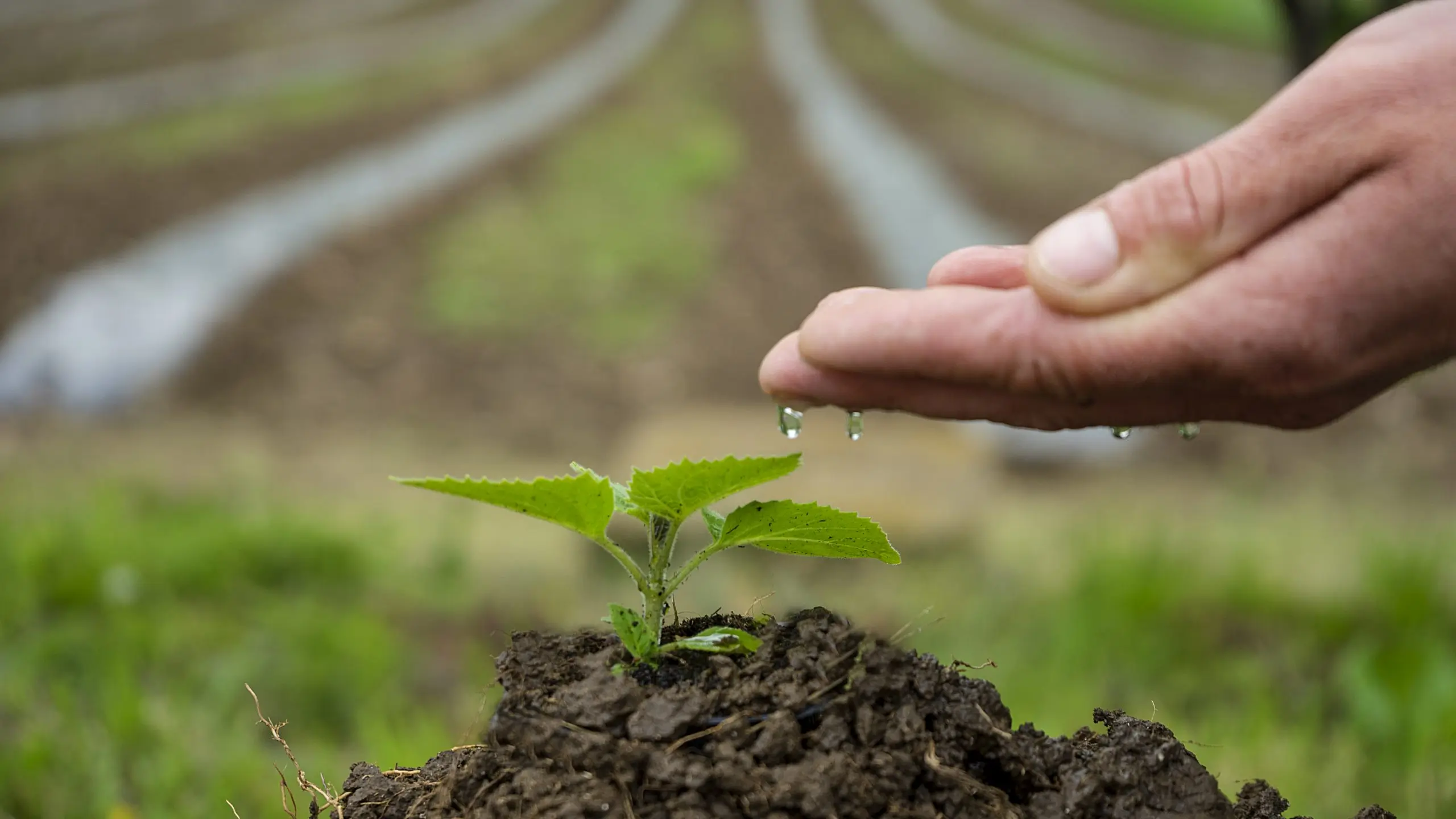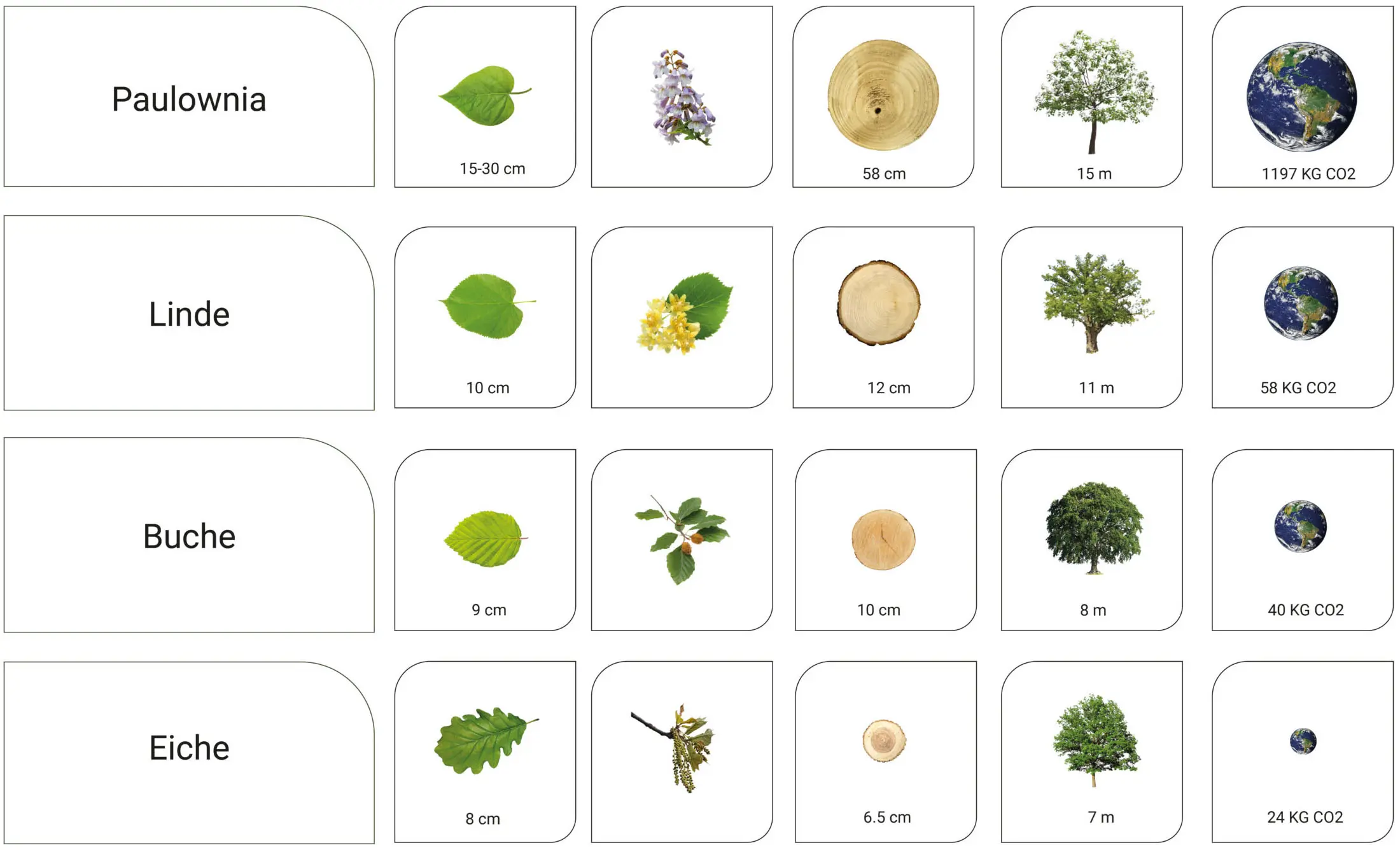
Services
KiriTrees Plantage
Here we give you information about the KiriTrees plantation and the factors influencing the growth of Paulownia trees. It is good to know that the location in Kosovo offers ideal conditions for the growth of this tree species. Topography and soil quality play an important role in the success of paulownia plantings. Development begins in spring when the soil temperature reaches 15–16 °C. The best growing conditions are found at an altitude of 700-800 m, and the optimum temperatures are in the 24-33 °C range. Paulownia is an adaptable tree species that thrives in a variety of soil types. Light, well-drained and sandy soils, with or without a slope, are particularly suitable. Deep, well-drained soils with a pH of 5.0 to 8.9 are optimal, while loamy, chalky, and moist soils should be avoided. Soils with a clay content above 25% and a porosity below 50% are not recommended for Paulownia. The salt concentration in the soil should not exceed 1%. Furthermore, both soil and air humidity are of great importance for the growth of paulownia trees. Therefore, we decided on the Republic of Kosovo, since all the requirements are met here.

Service
KiriTrees Plantation LLC performs the planting, nurturing, nurturing and harvesting of Paulownia (Elongata) trees. KirTrees Plantation LLC acquires land for lease or purchase in regions and countries suitable for growing Paulownia trees. KiriTrees Plantation LLC is constantly expanding its offering to meet the demands of climate change and sustainability. KiriTrees Plantation LLC cares about the resources of its customers. KiriTrees International AG in Switzerland is responsible for administration and sales.
Planting
The planting takes place from mid-May to the end of September, the seedlings have a size of 10-15 cm, the soil temperature should be between 12 and 16 degrees Celsius.
Rearing and growth
After planting, watering, cutting and fertilizing takes place. In the first two years, winter care is also required!
Care
The water supply is in the foreground at the beginning, the right cut, prevention and care against pests or diseases. Here we proceed fully biologically, with natural fungicides and pesticides. Winter and weather hardiness, in the autumn months.
Use
It is important to note that the specific properties of paulownia wood can vary depending on the species and age of the tree. Younger wood tends to be lighter and softer, while older wood is denser and more durable. Paulownia wood usage can vary in different industries and applications depending on specific needs and preferences.
Plantation news
Subscription
Here is a newsletter that keeps you up to date, everything about our Kiri climate tree
Advantages
Of course, the main advantage of our company is that this type of seedlings grows faster than other seedlings and is fire resistant. The cost of growing this seedling is low, so there is a satisfactory profit. The functionality of this tree is very large as it can be used in many industries and keeps the market growing.
Risk
The greatest risk is posed by environmental influences, which we counteract as far as possible. Fire protection, insurance and a good property and soil analysis help, of course. Taxes and labor costs are a significant factor, but very manageable due to our choice of location.
The genus Paulownia (in the family Scrophulariaceae) includes about nine highly productive species of valuable timber. They are native to southeast China and have been cultivated there for centuries. Species of the Paulownia genus possess C-4 photosynthesis and are among the fastest growing species in the world. In tropical areas they are deciduous and evergreen. The bark is smooth, and the branches run in opposite directions. The trees form many large gramophone flowers with many small seeds, which have small skinwings and show a high tolerance to changing environmental conditions. Paulownia is characterized by fast growth, high quality of wood, beautiful flowers and large leaves. All species of the Paulownia genus are fast-growing, but the most attractive for commercial use are the hybrids of these species, which have various valuable properties. High drought resistance, insensitivity to soil conditions and large temperature ranges (from -20 to +40 °C) make the Paulownia species extremely popular on the world market. Paulownia wood is lightweight yet exceptionally strong, making it the ideal combination for extensive use. It is light in color and can easily be dyed with all sorts of colors. It is used for furniture, veneers, rafts and boards, toys, and as a raw material for paper, biofuels, etc. The high strength-to-weight ratio makes paulownia wood irreplaceable in shipbuilding, aviation, surfboards, caravans, etc. Paulownia wood is quick to air dry (no tumble dryer required) and retains little moisture (up to 10-12%). It is exceptionally strong, resistant to twisting, breaking and deformation. The wood has a fine structure and a silky smooth surface without spots (knots). It is water resistant and has amazing resonance, making it very valuable and sought after for musical instruments. It is also very important that these types of wood are resistant to diseases, insects and pests. This significantly reduces the risks of commercial cultivation.
The use of paulownia in Japan dates back to 200 AD. Paulownia has been cultivated in China for centuries, the wood is used for furniture, construction elements, toys, musical instruments, boxes, packaging, etc. Paulownia usually starts producing seeds after 8 to 10 years. Under favorable conditions, a large tree can produce up to 20 million seeds a year.
Interesting information about the Paulownia tree
- Two kilograms of paulownia correspond to 1 liter of diesel.
- It has a calorific value of 3,680 kJ.
- Holds 1200 t. CO₂/ha per year, which corresponds to 100,000 kilometers driven by a car.
- It is a Mellifera plant with a honey yield/ha of approx. 700-1000 kg.
- Does not damage the soil, on the contrary it improves it.
- Has a rotating root of 10 to 12 m, which is intended to stabilize the soil.
- It is a light wood (twice lighter than oak).
- 2 times more fire resistant than ordinary beech wood.
- A very low humidity tree that is not itself affected by moisture and is a very good insulator.
- Outdoors, it can easily dry in 30-60 days.
- Very good workability.
- Its average weight is between 208 and 282 kg. /m3. Paulownia wood is almost four times lighter than oak (850 kg/m3) and twice lighter than pine (480 kg/m3).
- Paulownia has one of the highest strength-to-weight ratios of any wood species. The tensile modulus of Paulownia MOR is 843 kg/cm2.
Benefits of Growing Paulownia Trees
- Fast growing hardwood.
- Does not warp, tear or twist.
- Extremely fire resistant. The University of Texas describes the wood as fire-resistant up to a flash point of 477 °C.
- Fast growing hardwood for furniture, musical instruments, doors, moldings, window frames, poles, pulp and paper.
- Excellent for veneer and plywood.
- Paulownia can be harvested commercially in 4 to 7 years.
- Peels 20% faster than traditional hardwood.
- Lightweight blade with a fantastic weight to strength ratio.
- Perfect exterior and interior cladding for energy efficient homes.
- Regenerates after harvesting from the tree stump.
- Reaches a height of up to 22m
KiriTrees Plantage…
- Bluebell tree (also paulownia, kiri tree or climate tree)
- Growth habit: wide, loose crown Height of growth: approx. 12 to 22 m
- Foliage: very large, up to 60 cm when young, smaller later.
- Flower color: blue-violet
- Flowering time: April/May
- Fruits: ovate capsule fruits
- Planting time: all year round in tubs/pots, May recommended.
- Location: sunny, tolerates partial shade
- Soil: undemanding, moderately dry
- Delivery size: 10 – 18 cm
- Growth: about 2-4 m per year in the first 3 years, then about 1 m.
… more than trees
Frequently Asked Question
Here we answer frequently asked questions!
What is Paulownia?
Paulownia is a fast growing tree that is grown in different parts of the world. It belongs to the mint family and is also known as the emperor tree, blue bell tree or kiri tree.How long has KiriTree Plantation LLC existed?
We have been managing leased areas in Kosovo since October 2018.Where is the home of the paulownia?
Paulownia originally came from China, but is now widespread in many other countries, including the USA, Europe and Australia.What is Paulownia used for?
Paulownia has a variety of uses. The wood is used, for example, in furniture construction, for the construction of musical instruments, for wooden packaging and in interior design. The trees' fast-growing characteristics also make them attractive for reforestation, cultivation as timber, or for erosion control.How can I participate in Paulownia?
Quite simply, you buy a tree and we do the rest, right up to fruiting. All from a single source. Go to the shop and become a climate star!How can I become a customer/affiliate?
How does Paulownia absorb CO2?
The CO2 absorption of Paulownia trees is indeed impressive. Paulownia trees are known for their rapid growth and ability to absorb large amounts of CO2 from the atmosphere. During the growth phase they absorb more CO2 than they release. This makes them an interesting option in terms of carbon sequestration and promoting sustainability.Is the paulownia ecologically sustainable?
Paulownia is often considered an environmentally sustainable option because it grows quickly and can store a high amount of CO2 compared to other trees. Their wood can be used as a renewable resource and growing Paulownia trees can contribute to reforestation and provide environmental benefits.Process
Here you will find all the information you need to secure your climate tree!
1
Shop
Click the shop button
2
Order
Choose your climate dream!
3
Pay
Fill in the personal details and choose your payment method.
4
Accept
Accept the terms and conditions and you are already the proud owner of the climate tree!